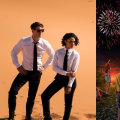We can see these media as “trendsetters, people or institutions that shape the way others think, eat, listen, drink, dress and more”. popular culture (the most widespread cultural patterns of a society) is transmitted through the media (any means of transmitting standardized messages to a wider audience). A variety of methods and interactions with other people contribute to the socialization of a developing individual. Socialization agents include people such as family, friends and neighbors, social institutions such as religion or school; media consumption; and environments that include interactions with other people, such as sports teams and the workplace.
Through these interactions, people learn what actions are acceptable by observing both the behaviors of others and the reactions of others to their behaviors. Although there are many variations within the same culture, the most widespread cultural patterns in a society are known as popular culture. Popular culture describes the most widespread cultural patterns of a society (i.e. Big budget Hollywood movies and the 40 best radio songs in the United States).
Popular culture is transmitted through the media (i.e. Any means of sending standardized messages to a wider audience). When the media first appeared, only a few sources could reach a large number of people. These media sources had an enormous influence on the culture of large groups.
The advance of technology has created many more media and, consequently, the dissemination of popular culture. This is a recorded test for students who missed the last live session. Due to high demand and limited places, there is a waiting list. You will be notified when your place in the test session is available.
New MCAT CARS ticket every morning. Media and Popular Culture is an international, peer-reviewed, open access journal that focuses on the various aspects of popular culture and how it intertwines with the media. Popular culture is a movement that began to give voice to the common masses through different media, such as television programs, technology, magazines, folklore, sports, sports, movies, contemporary books, paintings, sports, fashion, pop music, etc. It began against the pre-existing culture of the upper class of society.
Media and Popular Culture aims to study this distance between the hegemony of the elite class and the struggle of the lower class, and how the media have played an effective role in closing this gap. Interdisciplinary in nature, the magazine pays attention to the interconnection of popular culture with ethnicity, gender, identity and social class. All articles published by Media and Popular Culture are freely and permanently available online immediately after publication, without subscription charges or barriers to registration. Instead, information is disseminated all over the world without the active participation of traditional media.
Media studies carried out by sociologists parallel research on reading and interpreting texts carried out by linguists (people who study languages). Understanding Media and Culture of the University of Minnesota is licensed under an international Creative Commons Attribution-ShareAlike 4.0 International License, except where otherwise noted. Sullivan featured musical acts, comedians, actors and dancers and had a reputation for turning a group at the height of fame into full-fledged stars. They argue that those who are less powerful and do not have control of the media have often received full media coverage and subsequent support.
While television and the Internet have dominated the media, movies and magazines, particularly those that line the aisles of supermarket checkout counters, also play an important role in culture, as do other media. This widespread availability and exposure make television the main focus of most discussions in the media. And while the postmodern era specifically embraced popular culture, the media and pop culture have been intertwined since their inception. The story of Suárez, while certainly exceptional, addresses some of the questions faced by creators and consumers of pop culture in the Internet era.
Critics of this theory refute these arguments by saying that local control of the media is largely beyond the reach of large corporate offices elsewhere, and that the quality of news depends on good journalists. In addition, they point to examples from the media themselves and from the statistical reality that the media more often describe conservative commentators or politicians as “conservatives” than liberals as “liberals”. . .


